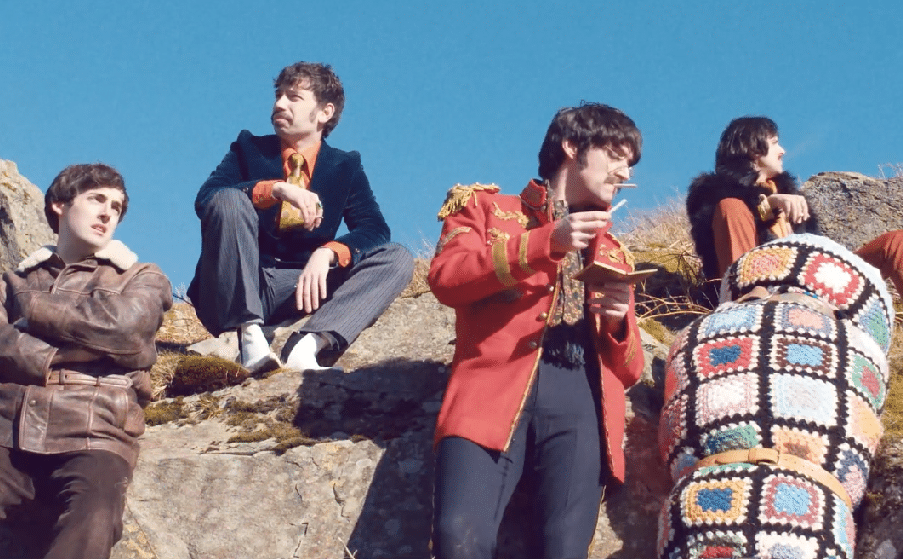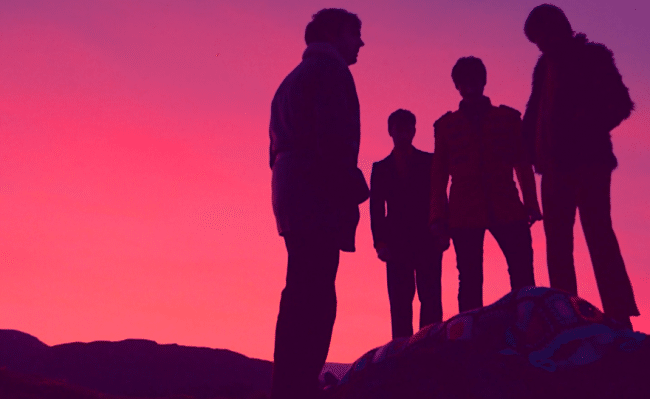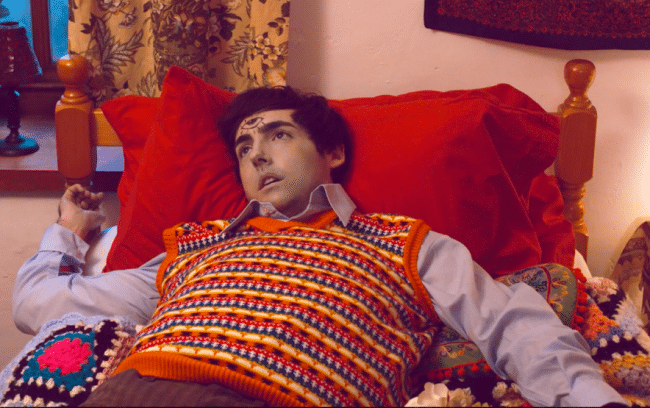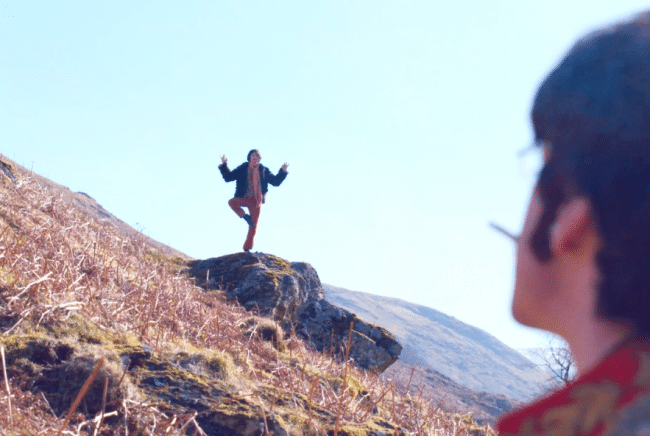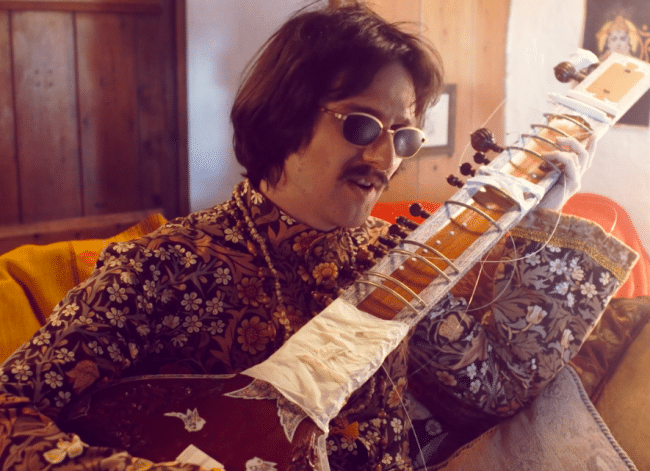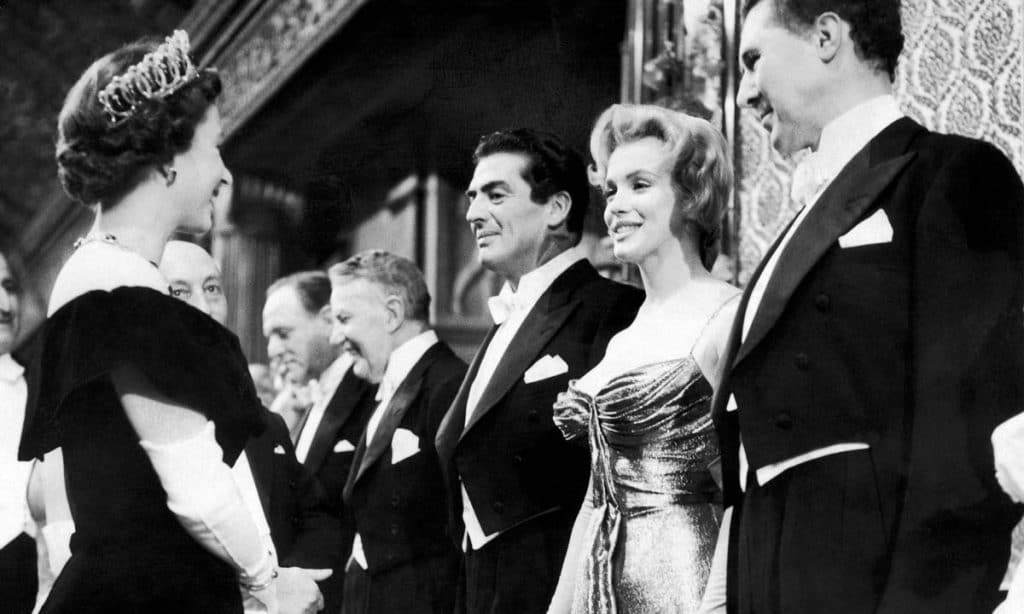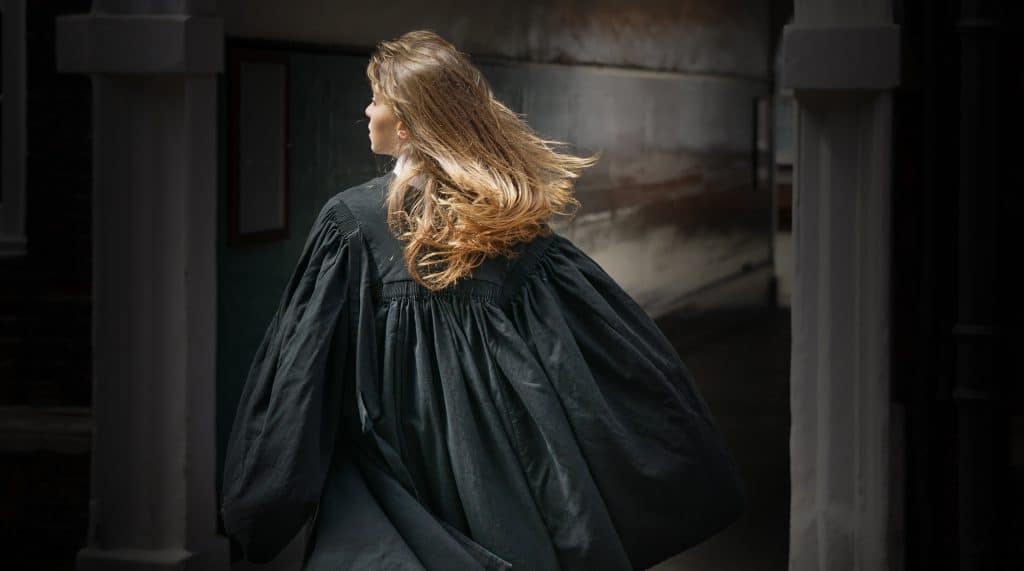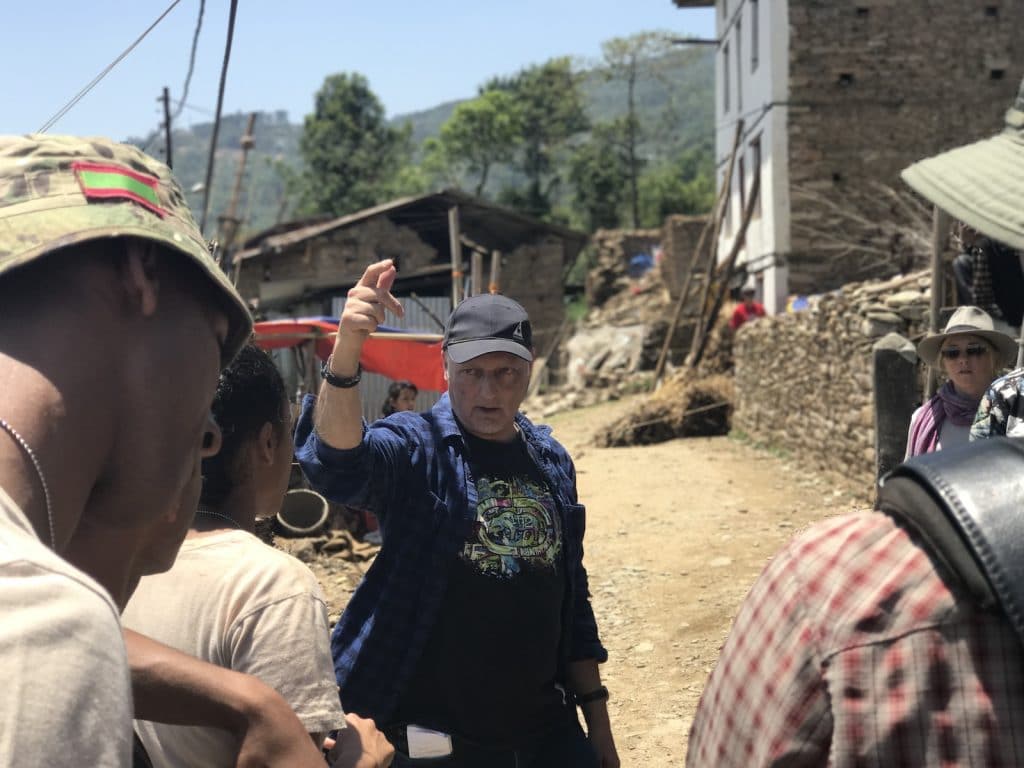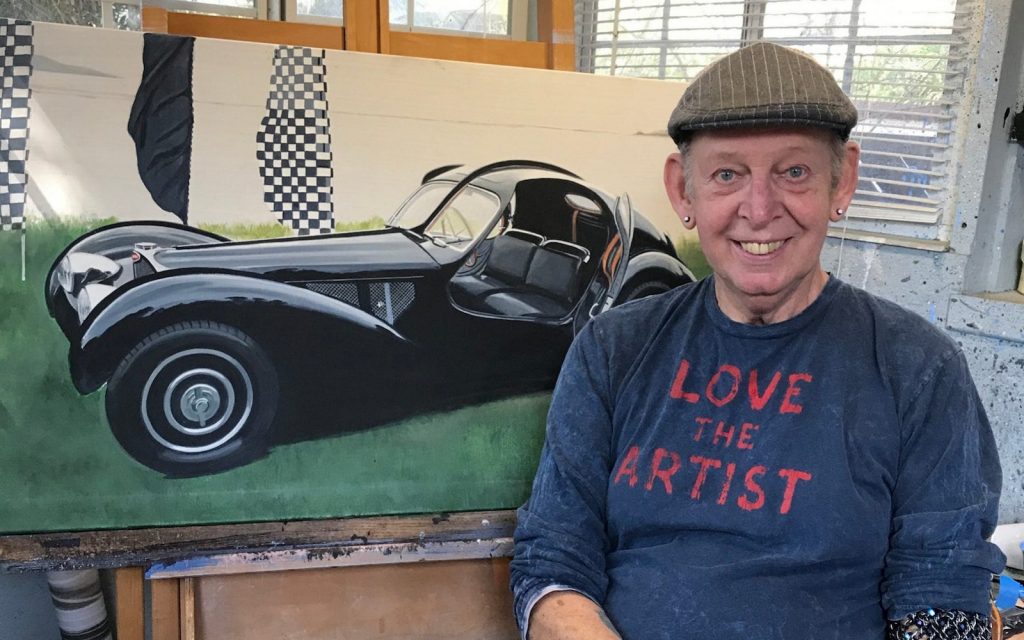How did the idea for Paul Is Dead first come to you, and were you aware of the Paul McCartney conspiracy theory beforehand?
My friend and co-writer Ben mentioned the conspiracy theory to me during a taxi ride home after a night out. I’d never heard of it before! I found the whole concept hilarious – the idea of the most famous and charismatic men on the planet at the time running around trying to cover up Paul’s death. Beatles fans of the time must have had such a wild imagination to conjure up an idea like that originally, it’s testament to the creativity of the Beatles’ music that it was able to inspire people to find so many varied meanings, and for them still to be searching decades later. I made a typical off-hand comment that people say all the time without much thought – “That would make a great film” – but the next day it was still fresh in my mind, so we got started figuring out how this story would work as a short film.
During the research pre-production period, did you manage to view any old press clippings, TV interviews and debates, or Beatles’ press statements from the time which covered the sensational news as it unfolded?
Research started with getting my head around the conspiracy theory, but I did this from more modern sources – there’s a great no-budget documentary on Youtube by Canadian filmmaker, Mitch Fillion, called Who Is This Now?, which is where’d I’d send anyone to start them off down the Paul Is Dead rabbit hole.
The Beatles rarely spoke about the conspiracy theory at the time, but we did use their films as our key reference for pre-production. The visual style of the film is a recreation of a very specific period in The Beatles in film, and as such we were quite loose with our version of events as per the conspiracy. Our main visual references are from 67-69, including the videos for Strawberry Fields Forever & Penny Lane, Magical Mystery Tour and the Rooftop Concert. If you watch our film next to those, I think we’ve done a pretty uncanny job of recreating the filmmaking style of that era.
In the direction of the film, I’ve also payed homage to the conspiracy by inserting layers of hidden meaning and ‘easter eggs’ into the film, which are incredibly hard to spot. There are allusions to many of the pieces of art and literature which inspired The Beatles, so hopefully some eagle-eyed Beatlemaniacs will get a lot out of repeated viewing!
Obviously Paul McCartney has alluded to this urban legend himself several times, most notably with his Paul Is Live album in 1993. Have you given any thought as to how you would like Paul McCartney to receive the film? Did you have any reservations about his possible reception to begin with?
I’d hope Paul appreciates the tongue-in-cheek nature of the film – so much of his life must necessarily be dictated by self-serious fans and Beatles-devotees (I’ve already received some unsavoury messages from obsessive nutters), so I just hope he’ll enjoy seeing something which doesn’t take itself too seriously, and is able to poke fun at the whole Paul Is Dead thing is a laid back, playful way. He has every opportunity to be the untouchable statesman figure (especially in such an uptight, litigious era as 2018, where it’s so easy to claim offence). I’d think he might really enjoy a bit of harmless cheekiness once in a while.
Reid Anderson who plays the character of John Lennon is a very well respected musician, and his beautiful song My Dearest Friends features in the film. Are the other actors, Anton, Basil and Ashley trained musicians, too?
Reid did such a brilliant job on that song – and I had no idea about it! He turned up to rehearsal and mentioned that he’s been working on something for the film, and he played me the guitar part; it was fantastic. I heard the lyrics for the first time during the shoot, and it lends so much to the story and theme of the film – another case of serendipity which lends the film that extra measure of Beatles magic! Anton’s background is in musical theatre, so is a professionally trained singer, and Basil and Ashley are also great singers and have strong songwriting talent. One of my best moments from the shoot was a night when the four of them sat down to sing Beatles songs, with Reid on guitar, to pass the time. Later that night, they began writing a few songs together – it was a brilliantly surreal moment, to be sat there with the four lookalikes, writing songs… it did feel for a moment like I was on holiday with The Beatles!
During the process of making of the film, did you learn anything new about The Beatles which surprised you?
I learnt a lot about their different roles in the group, personally speaking. The film is in part about male group dynamics, and the posturing and peacocking that happens when a key player is removed.
The great thing for me was that The Beatles’ specific roles already occupy a piece of collective mental real estate in the public psyche; and I don’t think its too cynical to suggest that The Beatles (or maybe Brian Epstein) carefully designed these roles themselves: John is the kaleidoscopic showman, Paul is the playful impish one, George is the experimental spiritual one, Ringo is the funny bemused one. Even the animators of Yellow Submarine knew this when they designed the walk-cycles of each character; John walks like a circus ringmaster, Paul floats around like a light-footed dandy, George swaggers like a cowboy and Ringo drags his feet like a schoolboy – it was a conscious decision by the filmmakers!
I wouldn’t say this came as a surprise, but I definitely feel like I have a much better insight into why their music works so well – you can hear these character roles in every song, and you just know who did what. They found a way to make us feel their personalities, like we know them. It’s the same rule they say about writing good fiction: show, don’t tell.
What do you think made The Beatles so special, and why do you think their enduring global appeal has lasted almost 60 years?
I think it’s got something to do with the fact that the common theme is peace and love – and that there’s an element of reassurance about their circumstance.
People say all the time that it’s not statistically possible that you’ll ever meet your soulmate, let alone in the same city, or the same century. It’s very hard to refute that kind of logic! But then you look at The Beatles and think that for a few years in the 60s, it happened – not just a two way romantic relationship, but a four-strong creative partnership that was the perfect cocktail, and greater than the sum of its parts.
Paul is Dead features a fun take on George’s spiritual path and his journey to India, have you ever held an interest in spirituality, meditation etc?
I’ve never been one for belief in the supernatural, whether classed as religious or spiritual, though I have a huge fascination in the rituals and storytelling involved, especially Indian, and am a fan of Joseph Campbell and his work on psychoanalysis of collective mythologies.
It does concern me that if George Harrison were doing what he did today, he’d without a doubt be hounded for cultural appropriation! We wouldn’t have all that wonderful music and artistic progress that came from it, as well as introducing western minds to the concepts of eastern belief. Political correctness is a positive effort, but creative progress and risk-taking should take precedent – in that respect, I see art, music and ritual storytelling becoming more insular and stale that it has been in the past – I’d like to think George would agree. We need more cultural exchanges!
The costumes for the characters are amazing, where did you source them?
My co-writer / production designer Stuart and I spent months researching, designing and sourcing the right outfits. The accuracy was meticulous, I’ll be glad to reveal some of the process! John wears a recreation of a paisley ruffled shirt which he wore to the Sgt. Peppers launch party in ’67. His coat is a red military jacket which we designed to be a crossover between the Sgt. Pepper jackets, a white military tunic he wore on the cover of Life magazine in ’66 and the red hunting jackets worn in the Penny Lane music video. John’s trousers are shaped and striped like those he wears in Yellow Submarine. His shoes are the Beatwear ‘Lennon’ boots. The shirt was tailored from scratch using vintage fabric, and the jacket and trousers were found pieces which were used as a base for alteration and embellishment, which we had done by Academy Costumes in London.
George wears a William Morris print kaftan which we had custom made by a specialist; this was inspired by the Indian Nehru-collar kaftans George wore from 66-68, and a William Morris print blazer he wore in 67. Over this he wears a fur jacket as worn in the rooftop concert, flared orange trousers and cowboy boots which turn up at the toe like Indian slippers.
Ringo favoured a suit and a tie throughout the psychedelic period, which fits with the bumbling schoolboy vibe, so we bought a 1967 Carnaby Street designer blue velvet jacket from Etsy, a 1970s bright orange oversized collar shirt and a big spotty tie. He wears baggy pinstripe trousers and white cuban heeled ‘beatle-boots’.
We wanted Billy and Paul to match, thematically. Paul wears an exact replica of his outfit from Magical Mystery Tour, which includes a colourful Fairisle tank top over a baby blue shirt with embroidery. Billy also wears a knitted tank top and collared shirt, to tie the two characters together, but in very thick knit wool (he’s a shepherd) and muted earth tones – he has a wool-collar leather coat, 1940s style corduroy trousers and chunky leather boots.
You shot the film in the Lake District, an area of remote, rugged beauty in the UK. What were the best and worst moments from the shoot?
It’s hard to pick a favourite moment, but it’s always very special the first time you see the cast in costume and on set, especially outside in such a striking location. Getting to call action on the first take brings back memories from the whole development process that lead to that place, and all the work that went into it.
The worst moment would probably be getting stuck. We shot in February, when the snowstorm hit the UK; and it started snowing heavily on our last day of filming. Thankfully we were shooting interiors that day (although the location was up the most treacherous road in the Lake District!) so we got the film in the can. By the time we were ready to leave our mountainside accommodation the next morning, we were snowed in! It lasted for five days, and we had to walk to the nearest town for an hour through a blizzard to get food & supplies. Whilst the snow was unfortunate, the whole shoot was an adventure, and I couldn’t have had a better team and cast to go on that journey with.
You and your co-writers, Stuart Armstrong and Ben Bovington-Key, have written an incredibly clever and funny script. What kind of comedy influences you?
Our first reference point (and the one which you can see clearly in the film) was Bruce Robinson’s cult classic Withnail & I, about two struggling London actors in 1969, who take a weekend away to the Lake District to find a refuge from city life, only to find that it’s themselves they need to escape from. The fish-out-of-water concept was there from the start, all three of us have been long-time fans of the film, and Stuart is from the Lake District, so it made perfect sense to pay homage to Withnail & I in our own way.
Another film which was an influence was The Darjeeling Limited, which follows three contrasting brothers (one who thinks he’s in charge, one who’s quiet and meditative, and one who’s funny and calamitous) going on a journey through India after the death of their father. Not only is the film an influence thematically and performance wise, Wes Anderson’s formalist directing style seemed to be a key point of inspiration for me & cinematographer Harry Green in our approach to the period camerawork in the film.
What are your hopes for Paul Is Dead? Where will it be released?
We’re releasing the film online on the 1st October 2018, and will be holding screenings in Liverpool and London over the coming months, where we will have Q&As, we’ll be displaying some of the costumes from the film and will have some live music. The film will be making the rounds of the festival circuit next year, starting in January.
The premise of the short is so unique and multilayered, and it seems like just the beginning for this particular fab four. Are there any plans in the pipeline for a feature film?
I’ve spoken to my co-writers and cast about a feature length Paul Is Dead, following the success of the short. We’re all very keen to do it, should the opportunity arise, and we have loads of ideas for how we will expand on the story and the comedy, including Billy’s home life, psychedelic drugs, an animated sequence and the story behind why and how the clues were left behind!
What’s next for you, George?
I’m working on a handful of projects at the moment which are seeking investors – currently I’m knee deep in development on a TV adaptation of a hit comic book series, a stylish, kaleidoscopic comedy about a failing record label and the motley crew of acts signed to it. It’s a really fun project, and there happens to be a Beatles-related storyline, so the Paul Is Dead cast might make a cameo appearance as Star Wars style force-ghosts! Hopefully that gives some indication of the type of show it will be.
I’m also keeping up with plans for the Paul Is Dead screenings, starting with Sunday 28th October in Liverpool – see you all there!
Paul Is Dead will be released online on 1 October 2018.
For further information, please visit: https://www.paulisdeadfilm.com
Recommended reading: The Beatles Anthology, to purchase visit our bookstore




